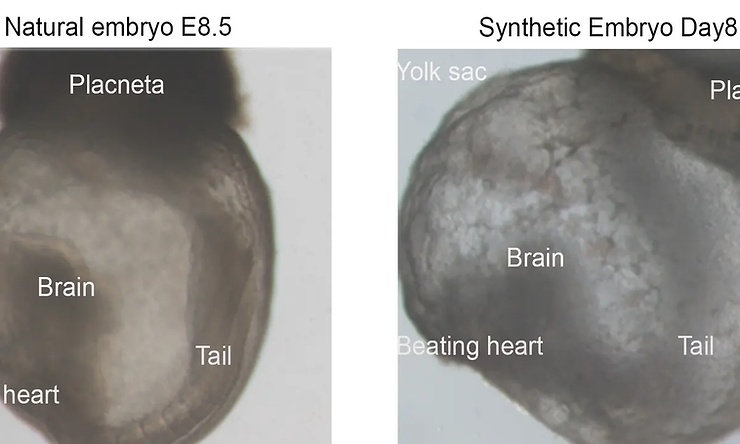By: Nina Gupta
Scientists have created a mouse embryo from stem cells for the first time. Remarkably, the research team from Weizmann Institute of Science in Israel stated that they achieved it without the fertilization process.
The growth process began with collecting skin cells from mice. The team then used chemicals to revert the cells back into stem cells, which meant that these cells could now become any type of cell in the mouse’s body.
Then, in one group of these reverted cells, scientists added additional modifications, stimulating “genes required to make the placenta”. In another group, they stimulated the genes that would form the yolk sac. Jacob Hanna, who is a stem cell biologist at Weizmann, said, “We gave these two groups of cells a transient push to give rise to extraembryonic tissues that sustain the developing embryo.”
These three types of cells were mixed, forming clumps with one of each type of cell. They were then put into an incubator, which was designed to continuously move and imitate a natural womb. There was a total of 10,000 test clumps, though only 50 clumps formed sphere structures that mimicked an embryo.
The fifty mouse embryos stopped developing after eight and a half days, which is “about a third of a mouse pregnancy”. According to The Washington Post, the embryos “rudimentary beating hearts, blood circulation, folded brain tissue and intestinal tracts.”
The versatile ability to create living entities out of a stem cell can be a milestone in the medical field. People could get organ transplants grown from their own cells, which would prevent issues like finding a willing donor or rejection of the transplant. This could also “potentially help find solutions for a range of issues such as pregnancy loss, infertility, endometriosis and preeclampsia”, possibly “cloning” people through this process.
Alex Meissner, who is a stem cell biologist at Max Planck Institute for Molecular Genetics, noted, “The mouse is a starting point for thinking about how one wants to approach this in humans. It’s not necessary to be alarmed or raise any panic, but … as we learn, it’s important to have in parallel the discussion: How far do we want to take it?”











